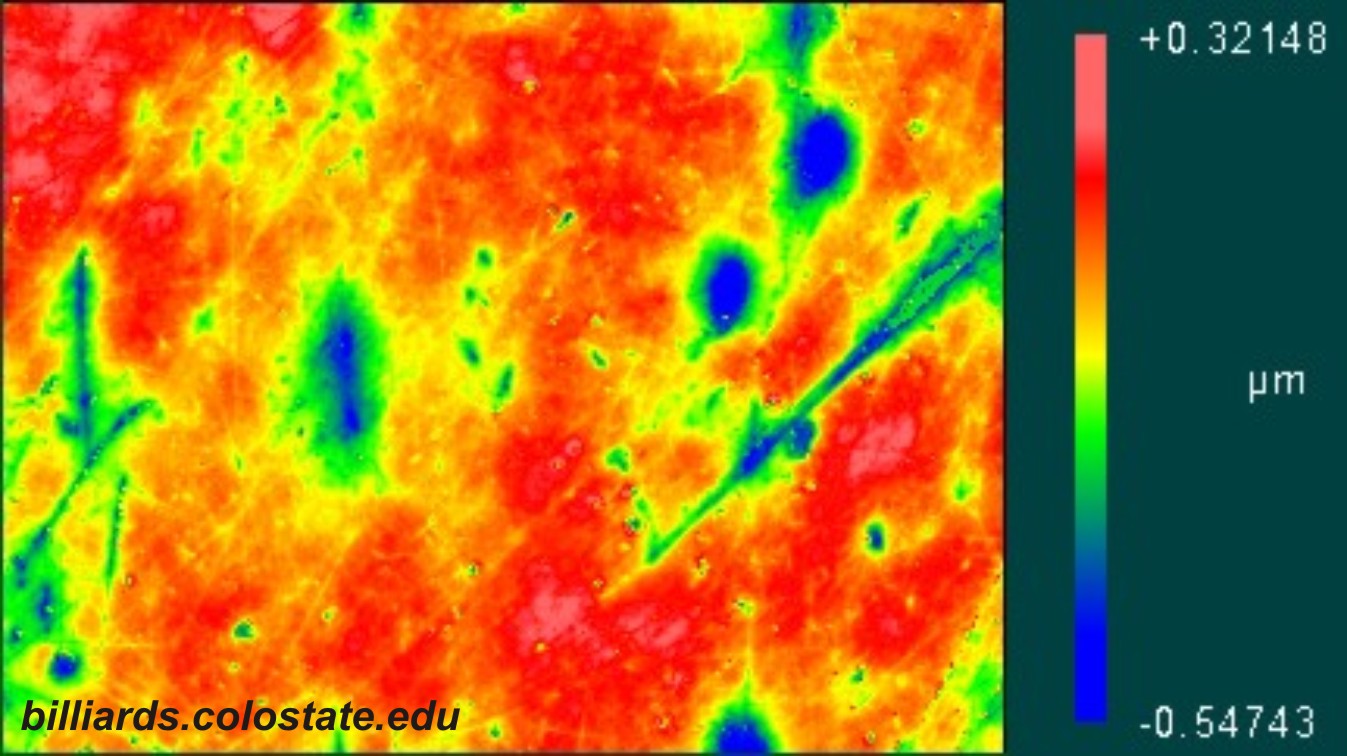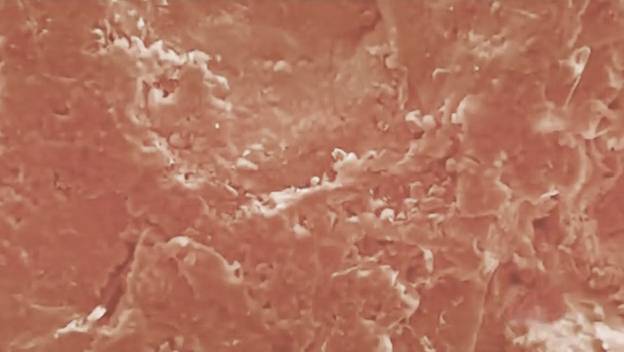What does a pool ball’s surface look like under extreme magnification, and how smooth and round is a pool ball compared to the Earth?
Here’s a 1mm x 1mm area of a clean and smooth cue ball imaged with a scanning white light interferometer:

The plentiful scratches are from the polishing process during manufacturing. The blemishes are simply slight defects in the formed material. The following contour map shows the relative size of the small peaks and valleys on the surface:

The scale indicated on the image above is microns (micrometers = 10^-6 meters = 0.001 mm).
See “Is a Pool Ball Smoother Than the Earth?” (BD, June, 2013) for more images and analysis. The quote from Bob Jewett below also offers a good interpretation of the data. And here’s another good article on this topic: Is the Earth Like a Billiard Ball or Not? And if you think the Earth is flat, you need to watch this video: Is Earth Actually Flat?
from Bob Jewett (in AZB post):
So from Dr. Dave’s picture we see a difference in heights of 1 micron (peak to valley) for spots that are within 1000 microns (1mm) of each other. Since the radius of a pool ball is about 28560 microns, the “local” roughness observed is about 1/30000 or about roughly 30 parts per million.
For a similar ratio on the surface of the Earth, consider the extreme of Mt. Whitney to Death Valley, which are pretty close to each other and differ in elevation by about three miles. Since the radius of the Earth is about 4000 miles, the “local” roughness of the Earth is about 1/1400 or 700 parts per million.
Measurements in Louisiana will give a different roughness. Driskill Mountain is 535 feet (or 0.1 mile, close enough) and the highest point in the state. 0.1/4000 is 1/40000 or slightly smoother than the polished ball Dr. Dave showed. If you look just at the oceans, the roughness is around 150 feet in the worst swells, but that would be quite a bit smoother than the polished pool ball.
Gouged pool balls — from having been knocked onto the floor or against the wall — might have pits 100 microns deep. Those would be rougher than California by a factor of 5 or so.
In my experience, Aramith balls out of the box are within 0.001 inch of the correct size and are rounder than that. That means that the non-roundness of a ball is less than 0.001/1.125 or 0.1% or about 1000PPM. The Earth is about 3300PPM out of round according to the above postings.
Bottom line: New, polished pool balls are much rounder than the Earth and somewhat smoother than the “geologically interesting” areas of the Earth. Old, worn pool balls are still much rounder than the Earth but depending on damage may be rougher than the roughest spots on the surface of the Earth.
from looey (in AZB post):
These are 3 photo’s of a billiard ball’s surface under microscope. I apologize for not having the actual magnification multiples (the mags were huge).



Dr. Dave keeps this site commercial free, with no ads. If you appreciate the free resources, please consider making a one-time or monthly donation to show your support:
